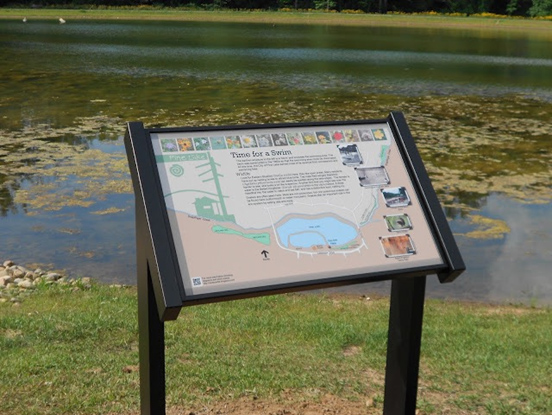The lake maintains its water level in a few different ways:
1. Rainfall: What falls into the lake directly during a rain event.
2. Stormwater: What drains into the lake during a rain event. The bioretention area along Lakeshore Drive, which was installed during the Great Dredge of 2011, helps to filter and slow the water running from higher up on the watershed, on the tree side of the lake.
3. Snapfinger Creek: Although technically also “stormwater,” this gets a category of its own. How does this urban storm water runoff from Memorial Drive makes its way into our lake, and better yet, how does it go from gross to swimmable? The Eastern Wetlands! That's how!
The Eastern Wetlands are man-made or “constructed” wetlands that take the icky stormwater runoff from Snapfinger Creek and filter it into swimmable lake water. A control valve allows the operator to determine when and how much water from Snapfinger creek to allow into the wetlands. When water is flowing into the system, first it slows down significantly through a desedimentation pond, giving the heavy particulates an opportunity to settle out of the water before continuing onward. This pre-filtered water then flows through another series of culverts and valves into the constructed wetlands, where, through the power of biological agents such as plants, animals, fungi and bacteria, it is slowly filtered into the clean water we swim in. Nature is magic!
Wetlands – The Kidneys of the Earth
